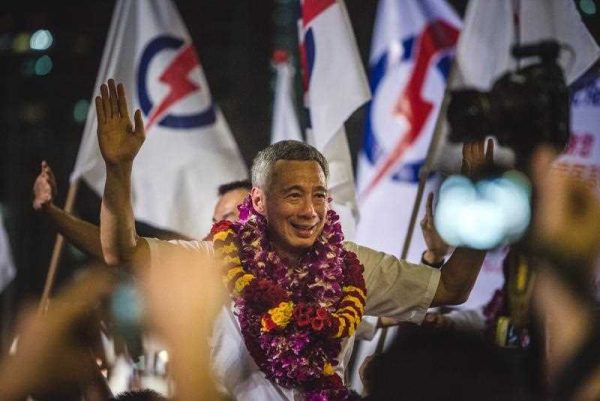The PAP strengthened its hold over Punggol East ward, which it lost in the 2013 by-election, and improved its performance in all constituencies across the island — earning more than 70 per cent of vote share in 15 out of 29 constituencies.
Remarkably, the PAP consolidated its hold over Potong Pasir, formerly held by long-time opposition leader Chiam See Tong. It crushed any hope that the Singapore People’s Party had of regaining the small constituency. Despite the Worker’s Party (WP) showing strong by winning six seats in the last election, it could only hold on to its five-member constituency in Aljunied by the skin of its teeth — by a mere 2 percentage points. This was the first election contesting all 89 seats, but the PAP swept 83 seats and earned a 93 per cent supermajority in parliament.
The PAP’s electoral victory was never in question. But the extent of its win caught many by surprise. A confluence of factors explains the big win. First, the timing of snap election, called after the country’s Golden Jubilee celebration, capitalised on the national nostalgia and gratitude for Singapore’s founding leader, Lee Kuan Yew, who passed away in March. The national swing towards the PAP was an endorsement for the incumbent to lead without Lee Kuan Yew.
Second, voters appreciated the government’s recent redistributive social policies, such as the 2014 Pioneer Generation Package to close the income gap and the 2015 Medishield Life to improve healthcare for the growing aging population. Voters were also grateful that the government responded to public sentiment by slowing down the unpopular immigration policy.
Third, the PAP presented a softer image. Consultative efforts through dialogue sessions such as Our Singapore Conversation have worked to repair the strained government–society relations since the last election. In August, the Transport Minister resigned in order to take responsibility for rail transportation disruptions. This was another concession by a party that does not typically bow to electoral pressures.
So what do the electoral results say about the prospects of opposition politics and democratisation in Singapore?
The results indicate that observers should be careful equating large turnouts at opposition rallies with rising opposition support. Reports of large turnouts at WP rallies and long lines for Singapore Democratic Party chief Chee Soon Juan’s autograph raised hopes for greater opposition presence. Yet, the huge crowd turnouts at opposition rallies did not translate to vote shares. This is because rally attendees come from different parts of Singapore, but can only vote in their own constituency. Singapore’s bloc vote electoral system means that opposition parties with geographically diffused support are disadvantaged. To win a bloc vote, parties need to build and concentrate their support base in one region.
The election showed that mainstream media is the dominant platform for information and communication. The negative publicity surrounding the WP’s mismanagement of its town council’s accounting and character assassinations of opposition candidates in mainstream media dented voters’ confidence in the opposition.
Because the government changed electoral boundaries and dissolved constituencies prior to election, the opposition had little time to recruit candidates and cultivate ground. Hence, despite fielding higher quality candidates — including medical doctors and lawyers — the opposition was unable to secure the result they were hoping for.
Finally, the demand for more political pluralism in Singapore is overstated. The election showed that Singaporeans want the PAP government — not a larger opposition presence — to check the government. It is understandable why Reform Party leader Kenneth Jeyaretnam called the result a ‘mandate for authoritarianism’ and that ‘Singaporeans get the government they deserve’. The public pushback against opposition parties contesting all seats suggests that they need to be strategic and field candidates only in few select constituencies in the next election.
This election decimated smaller opposition parties and thwarted any momentum towards a two-party system. Singapore’s one-party dominant electoral arena now leaves no space for independents. Two independents have already lost their electoral deposits of S$14,500 each (approximately US$10,300). Given the six elected opposition members in parliament, the constitution allows for another three ‘best performing opposition losers’ to get into the house under the Non-Constituency Member of Parliament scheme. With only nine opposition members in parliament, the WP will need to seriously rethink its policy focus and recalibrate its strategy in the new political landscape under a stronger PAP.
Singapore voters are pragmatic, self-interested and risk-averse. They have responded to electoral rewards and voted for the PAP with a track record of delivering the economic goods. Deputy Prime Minister and Finance Minister Tharman Shanmugaratnam’s team won over 79.3 per cent of vote share. This shows that voters want political leaders with strong financial acumen. Financial crisis or mismanagement will be key factors that will weaken the PAP’s support in future.
Strong mandate comes with strong responsibilities. As the electoral dust settles and business returns to normal, all eyes will be on the team to perform.
Netina Tan is an assistant professor in the Department of Political Science at McMaster University, Canada.

